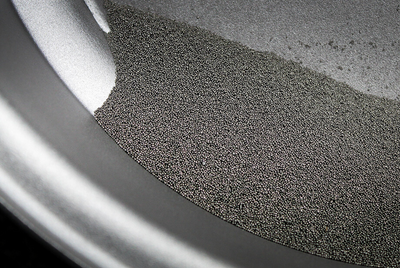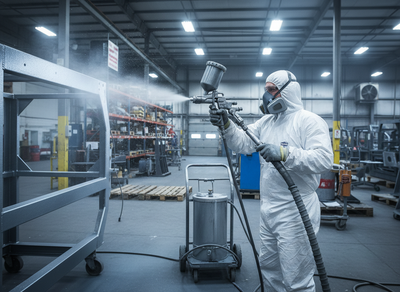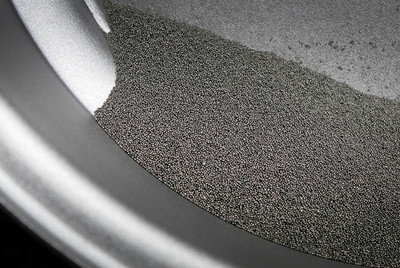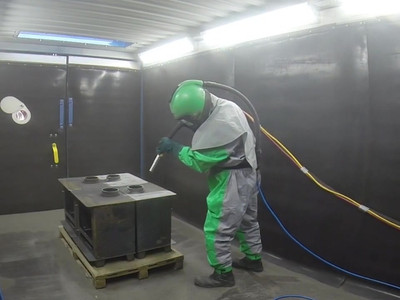12th Sep 2025
Grit blasting – also known as abrasive blasting – is a common industrial technique used to clean, smooth, or roughen a surface. It plays a vital role in surface preparation methods across sectors like manufacturing, construction, automotive, marine, and oil and gas. Whether you’re removing old coatings or preparing a surface for painting or bonding, grit blasting helps ensure the surface is properly conditioned for the next stage of work.
But what exactly is grit blasting? How does it work, and why is it so widely used? Let’s take a closer look.
What is grit blasting?
Grit blasting is a mechanical cleaning process where a stream of abrasive particles is propelled at high velocity onto a surface using compressed air or a centrifugal wheel. The term grit refers to abrasives with an angular or sub-angular grain shape, which makes them highly effective at cutting and cleaning. The abrasive media scours the surface, removing contaminants such as rust, paint, scale, and other unwanted residues.
Different abrasives can be used depending on the surface type and desired outcome – from steel grit to aluminium oxide, or even eco-friendly alternatives. You can explore our full range of abrasive media on our website.
How does grit blasting work?
At its core, the grit blasting process involves three main components.
- Abrasive media: This is the “grit” used to impact the surface.
- Blasting equipment: Including a blast pot, hoses, nozzles, and a source of compressed air or mechanical propulsion.
- Operator control: The technician directs the abrasive stream toward the workpiece, adjusting angle, distance, and pressure to achieve the desired effect.
Here’s a simplified breakdown of how the process works:
- The blasting system stores the abrasive media in a pressurised vessel (the blast pot).
- Compressed air forces the grit through a hose and out of a nozzle at high speed.
- The abrasive impacts the target surface, cutting through contaminants or altering the texture.
- Used media and debris are collected and filtered for reuse or disposal, depending on the abrasive and the system.
Modern industrial blasting techniques often include blast cabinets, automated machines, or enclosed rooms for safety and efficiency.
What are the main applications of grit blasting?
Grit blasting is essential in a wide range of industries. Some of its most common applications include:
- Steel fabrication: Removing rust or old coatings before welding or painting.
- Shipbuilding and marine: Cleaning hulls and preparing surfaces for anti-corrosion coatings.
- Automotive repair: Stripping paint or corrosion from car parts and panels.
- Oil and gas: Cleaning pipelines, tanks, and structural components in harsh environments.
- Construction: Prepping steel beams or concrete surfaces for bonding or coating.
What are the benefits of grit blasting?
A poorly prepared surface can cause coatings or adhesives to fail prematurely, leading to costly repairs or safety risks. In industries where performance and durability matter, grit blasting is a non-negotiable step.
Key benefits of the grit blasting process include:
- Improved surface adhesion for coatings, paints, and sealants
- Extended equipment lifespan by removing corrosive materials
- Efficient and consistent cleaning compared to manual methods
- Customisable surface profiles based on application needs
Final thoughts
Grit blasting is a powerful and versatile surface preparation method used across countless industries, offering speed, efficiency, and consistency. By understanding how grit blasting works and why it’s essential, you can make informed decisions about surface treatment and ensure long-lasting results in any application.
Need help with grit blasting?
Whether you're selecting the right abrasive or setting up your blasting system, we're here to help. Contact us for expert advice or browse our abrasive blasting equipment on our website.




